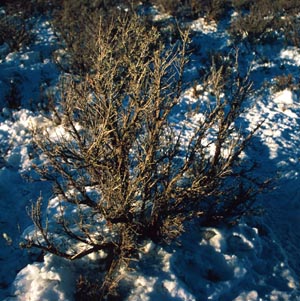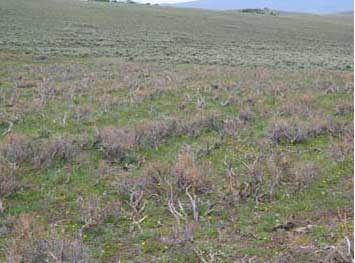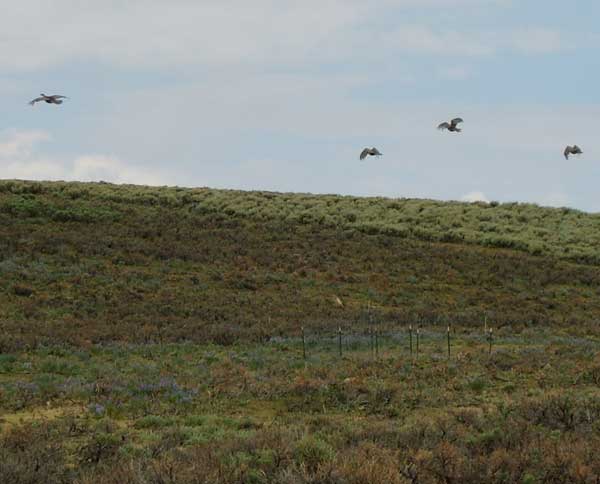Fall Grazing With Sheep To Improve Sage-Grouse Habitat

Project Participants: Michael Guttery, Roger Banner, Andy Taft, and Terry Mesmer
 Utah State University researchers have been using their understanding of behavior to see if they can manipulate vegetation and improve wildlife habitat.
Utah State University researchers have been using their understanding of behavior to see if they can manipulate vegetation and improve wildlife habitat.
In the fall of 2006, graduate student, Michael Guttery, and Range Extension Specialist, Roger Banner, grazed ewes on sagebrush dominated rangeland on Parker Mountain in Piute County. The objective of the study was to determine if supplementation and high-density, short-duration fall grazing by sheep would increase grasses and forbs important for sage-grouse and improve habitat for sage grouse on rangeland heavily dominated by sagebrush. At the same time researchers hoped to increase available forage for sheep producers and flush ewes to improve lambing.
Eight 8-acre plots dominated by sagebrush were grazed with 1000 mature ewes from mid-October to the end of November. Ewes received 2 to 3 lbs/hd/day of pelleted supplement containing 30% corn, 5% soybean meal, 45% alfalfa and 20% beet pulp. Sagebrush contains terpenes that decreases the amount of sagebrush sheep are willing to eat. Previous work by researchers at USU demonstrated intake of sagebrush can be increased by feeding a supplement that offsets the effects of terpenes.

Sagebrush was heavily browsed during the study. The photo on the right shows the level of heavy browsing most plants received. Browsing by sheep decreased sagebrush cover from 27% to 9% while sagebrush in the ungrazed plots remained unchanged. Forb and grass cover were slightly higher for grazed versus ungrazed plots.
Grouse used grazed areas more than areas that were not grazed by sheep. Biologists can track use of an area by counting dung or bird pellets. Grazed plots contained five times as many pellets as ungrazed plots. In addition, three times as many sage grouse were flushed from grazed plots as ungrazed plots (photo bottom of page). Sheep used in the study maintained their body condition while browsing sagebrush and eating sagebrush on late fall did not reduce the lamb crop.
This project was funded by the USDA-NRCS/USU Sage-grouse Restoration Project.


